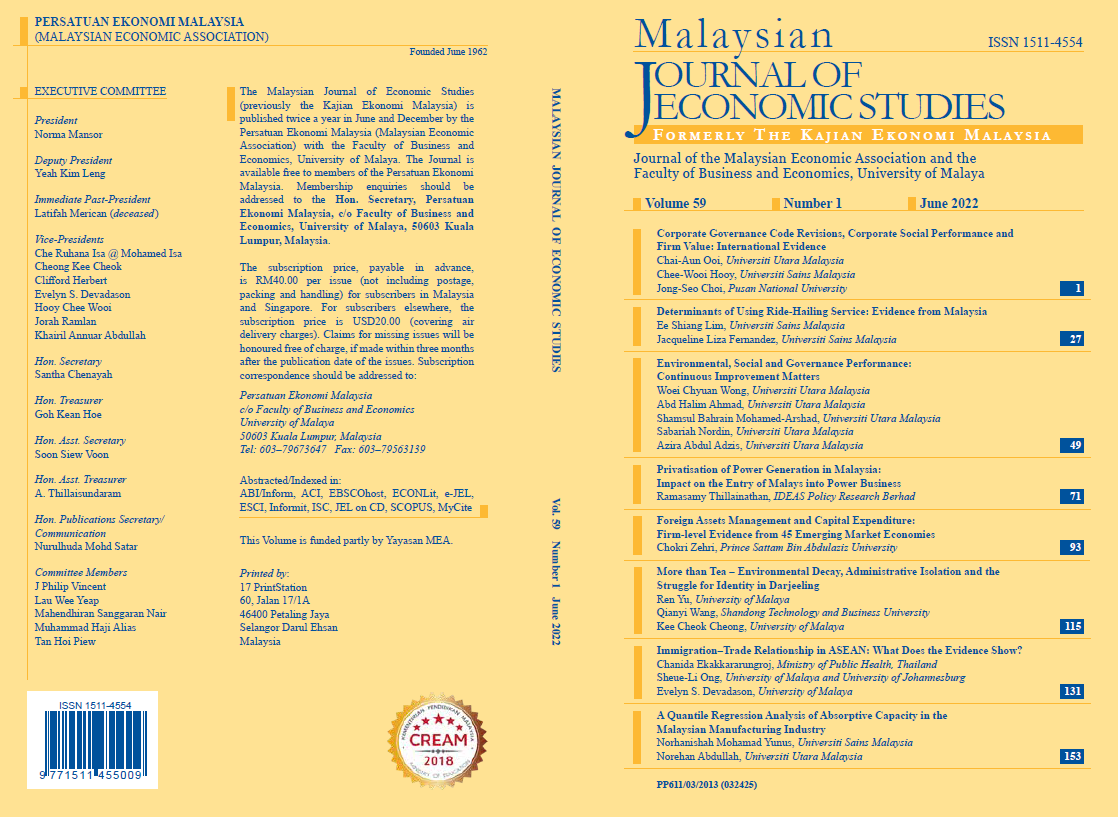Immigration - Trade Relationship in ASEAN: What Does the Evidence Show?
DOI:
https://doi.org/10.22452/MJES.vol59no1.7Keywords:
International migration, international trade, intra-industry trade, ASEANAbstract
The Association of Southeast Asian Nations (ASEAN) region has become more integrated through trade and migration. Yet, public policies in ASEAN do not consider the interrelations between trade and immigration policies. Therefore, the paper employs a static panel gravity model for the 10 ASEAN countries over five-year intervals between 1990 and 2020 to identify the direct connections between migration and trade (exports, imports and intra-industry trade). The empirical results support a pro-import immigrant effect but not a pro-export immigrant effect. The negative effect of the stock of immigrants on the share of bilateral intra-industry trade implies that immigration better explains one-way trade or inter-industry trade. The limited presence of the immigrant-link effects reflects the large stock of unskilled ASEAN immigrants that reduces the possibilities of creating networks between the home and host countries. The significant immigration-import links, however, is sufficient to justify the importance for ASEAN to work towards connecting migration and trade policies.

